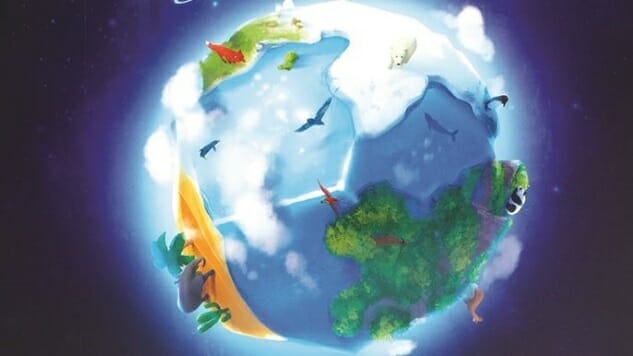The Board Game Planet Has Awesome Pieces but Not Enough Strategy
Images courtesy of Blue Orange Games.
Planet, released earlier this year by Blue Orange, particularly shines in its look and feel: Each player gets a 12-sided polyhedron and will attach magnets to all 12 sides over the course of the game as they build their planets for points. It’s a very quick game to learn and to play, even with four players, that lets you hold the whole world in your hands, although there isn’t much depth here and there are a lot of random elements beyond any one player’s control.
Designed by relative newcomer Urtis Šulinskas, Planet asks players to build their planets to make them more hospitable for various species that seek to live in the five basic habitat areas shown on the game pieces: desert, forest, mountain, water, and tundra. The game comes with 50 magnetic terrain tiles, each of which is a pentagon and contains five triangles showing three to five different terrain types on them. Each player is randomly assigned one terrain type, known only to themselves, for which they’ll score bonus points at game end. To start the game, the players shuffle all 50 tiles—by which I mean you throw them all on the table face-down, swoosh them around a lot, and then start ‘randomly’ grabbing stacks—and split them into 10 stacks of five, corresponding to rounds one through 10. The discards from those rounds will go to fill up the stacks, also five high, for rounds 11 and 12.
In a round, the stack is spread out on the table, and players go around the table choosing one tile to select and place somewhere on their planets—the polyhedrons I mentioned above, with the tiles and orbs both magnetic so the pieces go on and usually stay on (I’ve had one fall off mid-game, which isn’t great unless you know exactly which space it was on). For the first two rounds, that’s all you do.
-

-

-

-

-

-

-

-

-

-

-

-

-

-

-

-

-

-

-

-

-

-

-

-

-

-

-

-

-

-

-

-

-

-

-

-

-

-

-

-









































